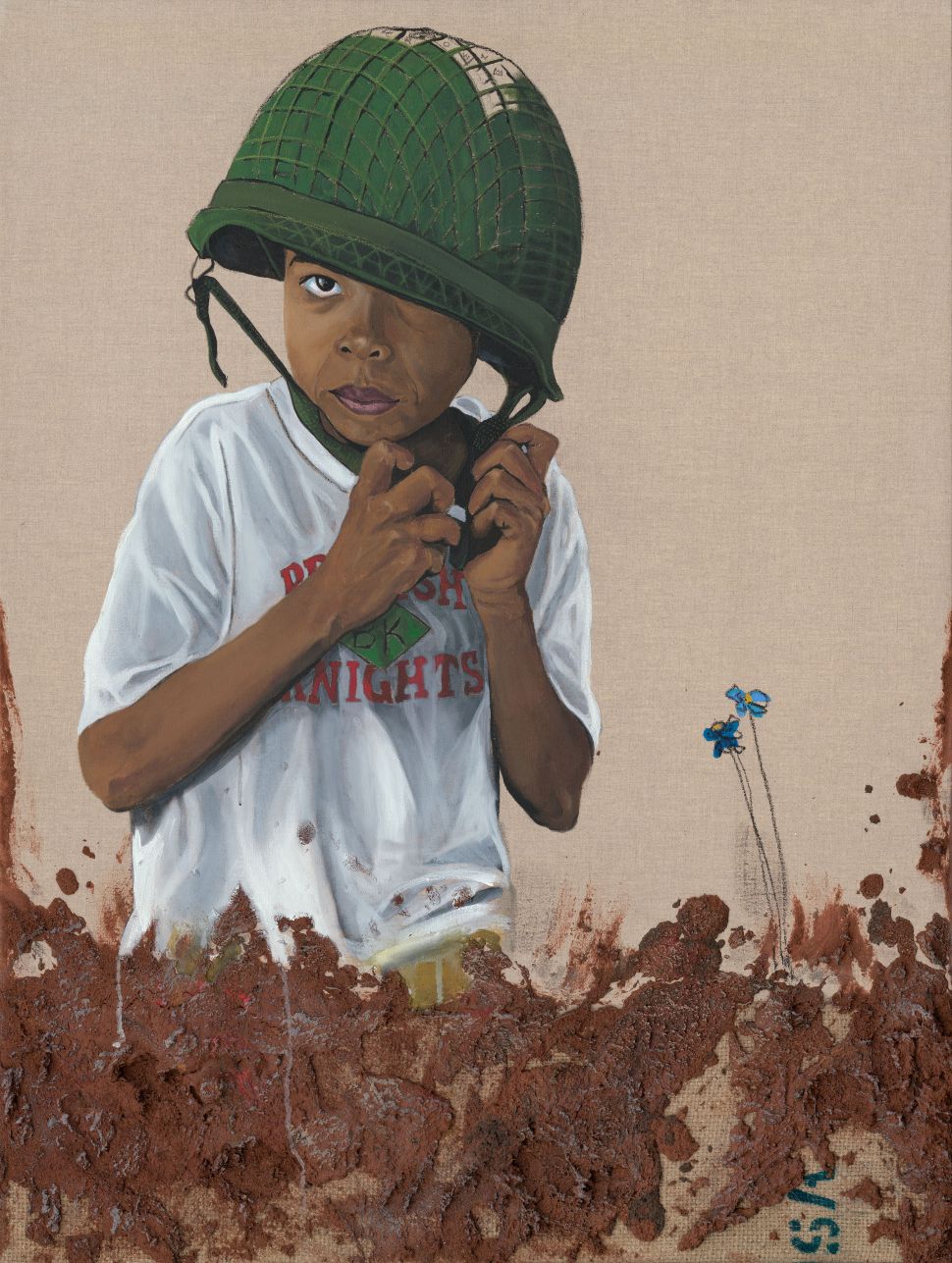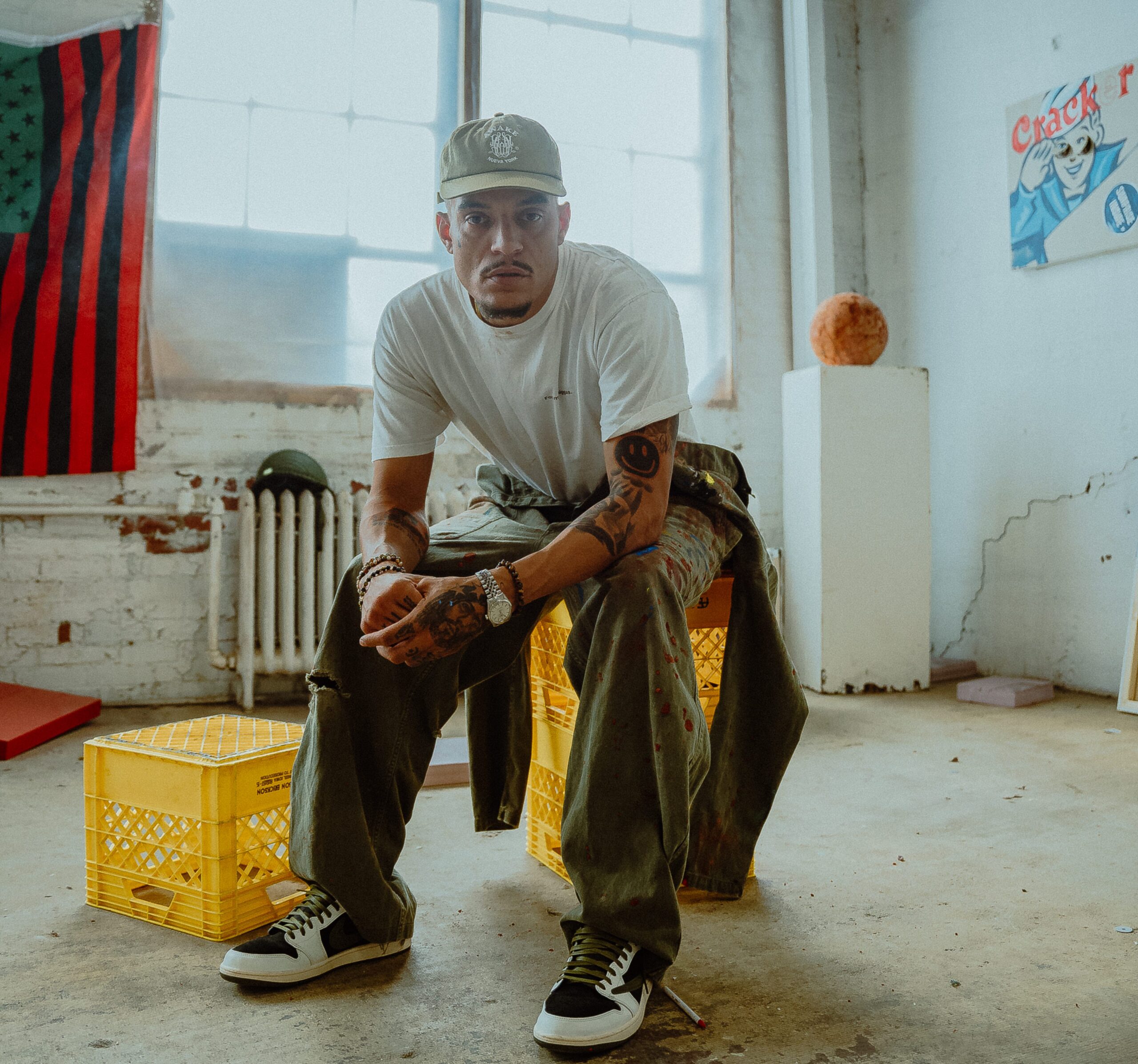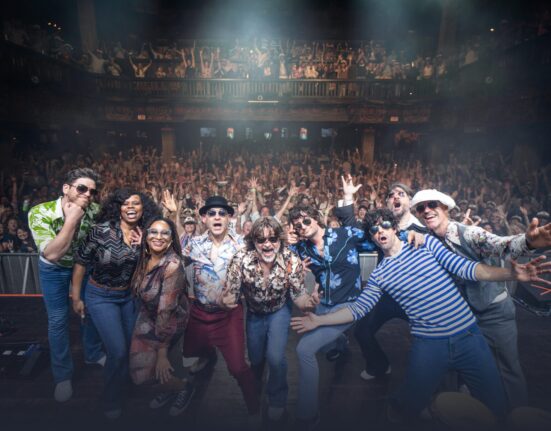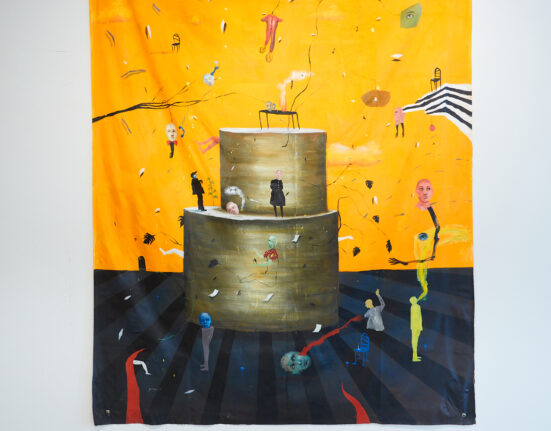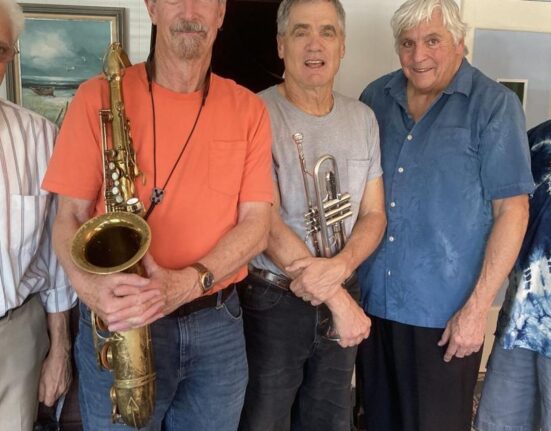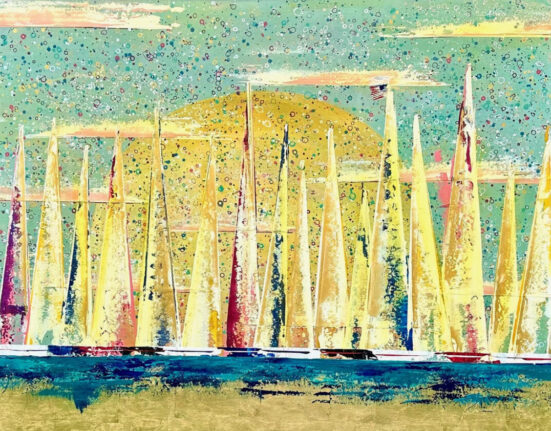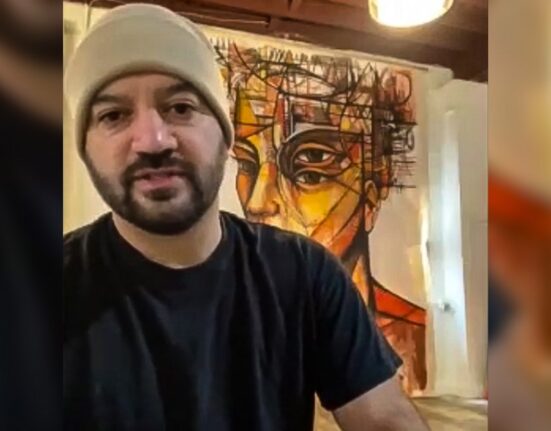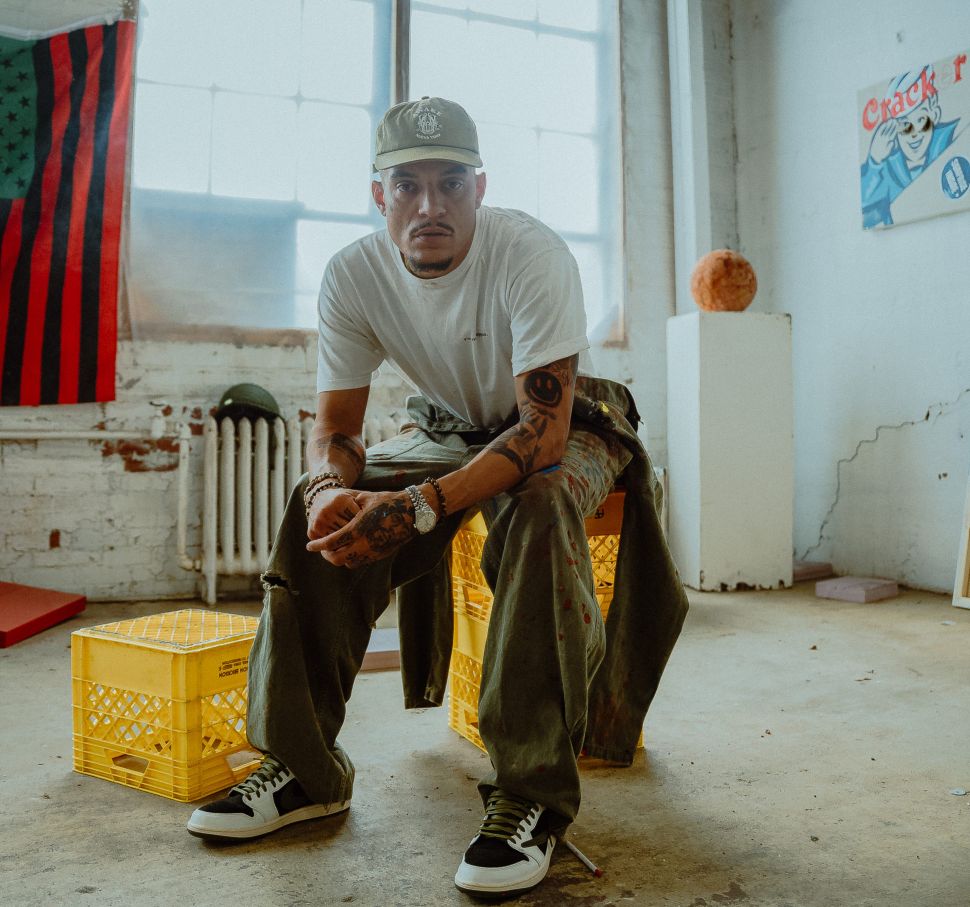
Multidisciplinary artist b. Robert Moore drew as a child but didn’t start painting seriously until 2017, as a way to facilitate healing after struggling with addiction. He credits art with saving his life, which isn’t unusual for those who turn to creative pursuits as a balm in challenging times, but in Moore’s case, the output of his cathartic foray into painting eventually attracted the notice of art world insiders and collectors in Los Angeles, Chicago and other cultural hubs.
His first solo show in 2023, “Out the Mud: A Black American Rite of Passage,” sold out at Thinkspace Projects in L.A. While Moore may not yet be a household name, his work is in the collections of people whose names you likely do recognize: television personality Gayle King, musician Lil Yachty, actress Taraji P. Henson and actor Taye Diggs, among others. You’ll also find his paintings in the Wright Collection and the collection of Joy Simmons.
Moore focuses on social justice and Black identity in his work, drawing on his own story and those of loved ones—his work is often overtly political (as with Every Ni**a A Star, which was first shown in “Out the Mud”) but much of it is also personal in a way that not only challenges stereotypes of Black American life but also gives off a powerfully comforting aura of closeness. His visually direct portraits are striking in their intimacy; there’s a sense of being invited into someone else’s family reunion.
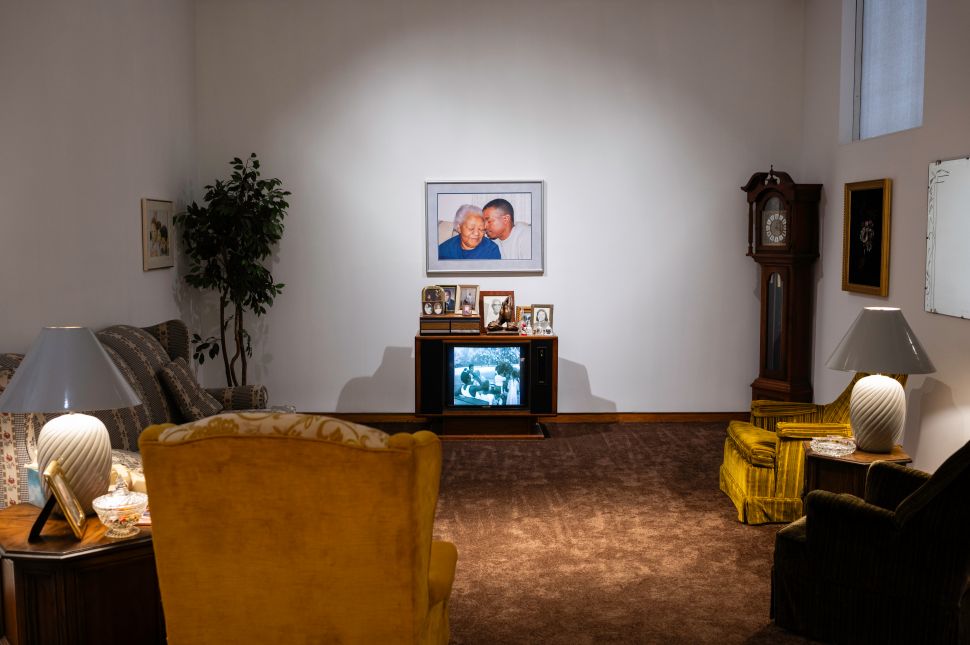

If you’d like to see Moore’s work in person, his solo exhibition, “In Loving Memory,” is at the Des Moines Art Center through October 20 (the institution added his painting Kin to War to its permanent collection). Curated by Laura Burkhalter in partnership with b. Robert Moore, the show pairs a selection of his paintings with two stirring installations: Back In My Day Times Were Different and Involuntary State. Observer recently caught up with the artist to discuss his practice, his inspirations and the artists he’s excited about.
First, tell me a little bit about your practice and how it has evolved over time.
My artistic practice began as a therapeutic escape, where I sought to affirm my complex identity as a Black American amidst alienating ideologies. Initially, my work reimagined popular comic strip characters as Black individuals, making bold statements on representation and identity. Over time, my art has evolved to explore more profound and raw depictions of Black American life, celebrating its heroes and revealing its hidden figures. My current exhibition is a culmination of this journey, challenging stereotypes and offering a poignant exploration of family and identity from the perspective of an Iowa native. The exhibition spans three distinct rooms, each evoking different aspects of the Black experience, from the warmth of a grandmother’s living room to solemn tributes to fallen kin.
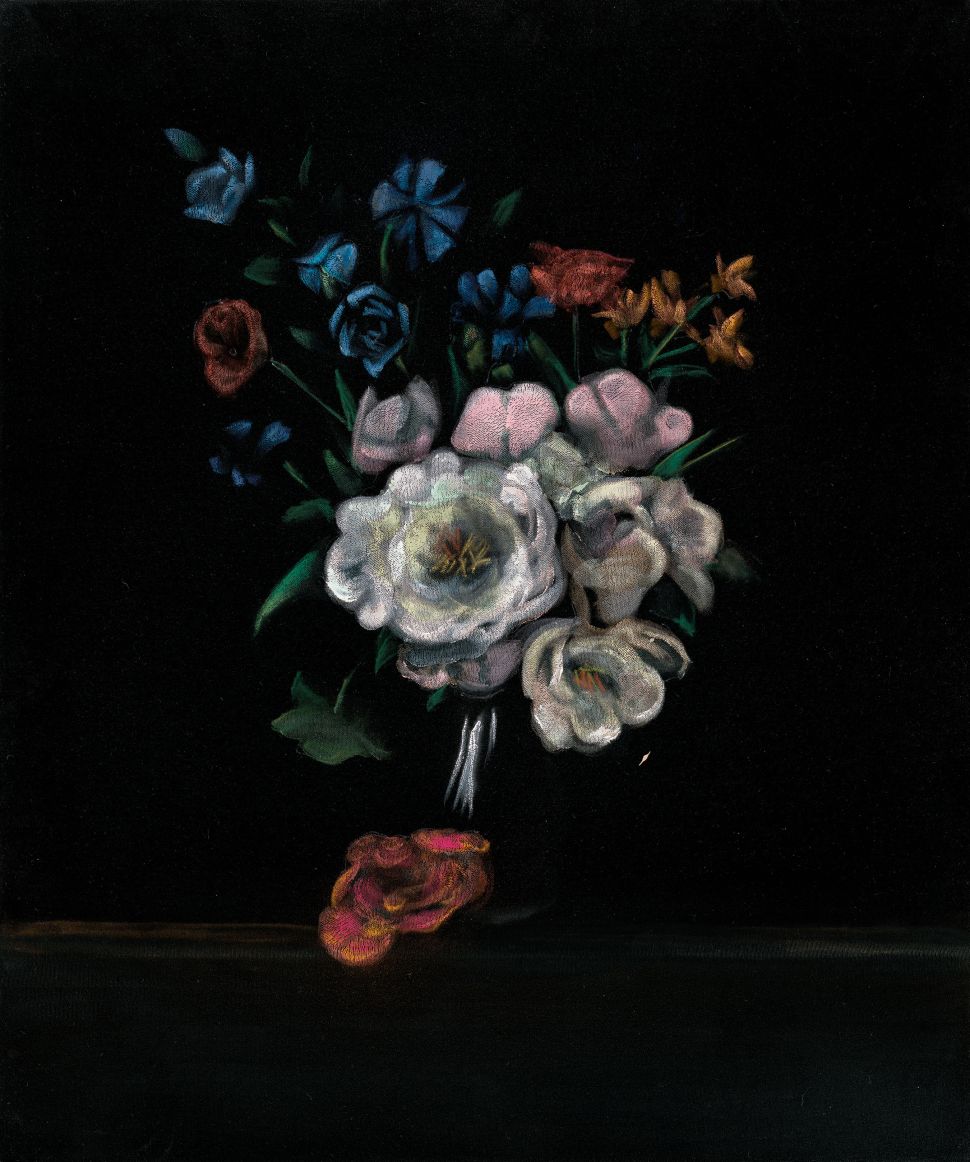

Does being self-taught impact your work in any way?
Being self-taught has significantly impacted my work, allowing me to develop a unique voice and style unconstrained by traditional academic training or instructional constraints. This independence has given me the freedom to experiment with various mediums and techniques, including acrylic, charcoal, sawdust and Ethiopian coffee, which adds depth and texture to my pieces. It has also enabled me to draw deeply from personal experiences and cultural heritage, creating art that is both authentic and resonant with my identity.
How does your identity manifest in your artwork? Is that a conscious choice on your part or something intrinsic to your practice?
My identity as a Black American is intrinsic to my practice, and each piece I create is an exploration of my personal narrative intertwined with broader social themes. My works delve into the realities of Black life, from celebrating achievements to confronting struggles. For instance, my piece “Kin to War” references world war history and the sacrifices of Black Americans, both voluntary and involuntary. By blurring the lines between the political and personal realms, my art invites viewers to engage with the complexities of what it means to be Black in America.
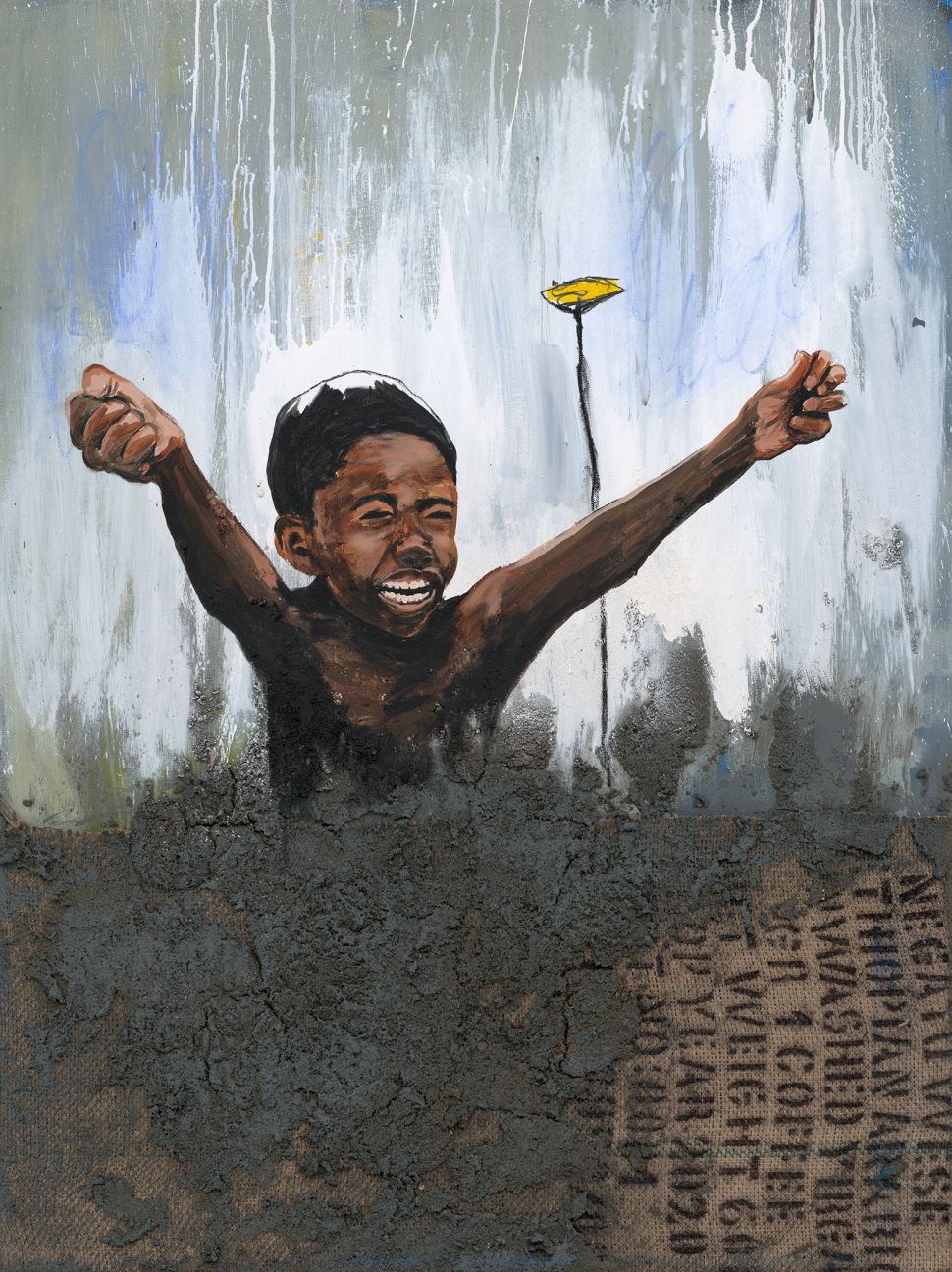

Who are the people in your paintings?
The people in my paintings are often reflections of the multifaceted Black experience, including family members, historical figures and abstract representations of broader communities. They embody the hidden figures and unsung heroes who have shaped the identities of Black individuals. My work aims to immortalize these figures, celebrating their contributions and challenging conventional stereotypes. For example, Mama’s Boys captures the essence of familial bonds and the strength found within Black families as well as an emphasis on the structure and destructure of the Black American family.
Is there a direct one-to-one relationship between your chosen subjects and the politics you reference in your work?
My work often addresses themes such as racial disparities, gentrification and representation. There is a direct relationship that viewers can pick up on, as I strive to make my art accessible and thought-provoking. Pieces like Operation Varsity Blues expose the structural inequities in the American education system, while Reparations Needed To Pass Go 💰 reimagines the classic Monopoly game to highlight unresolved issues of reparations and slavery in America. These socio-political themes are integral to my practice, reflecting my commitment to social justice and change.
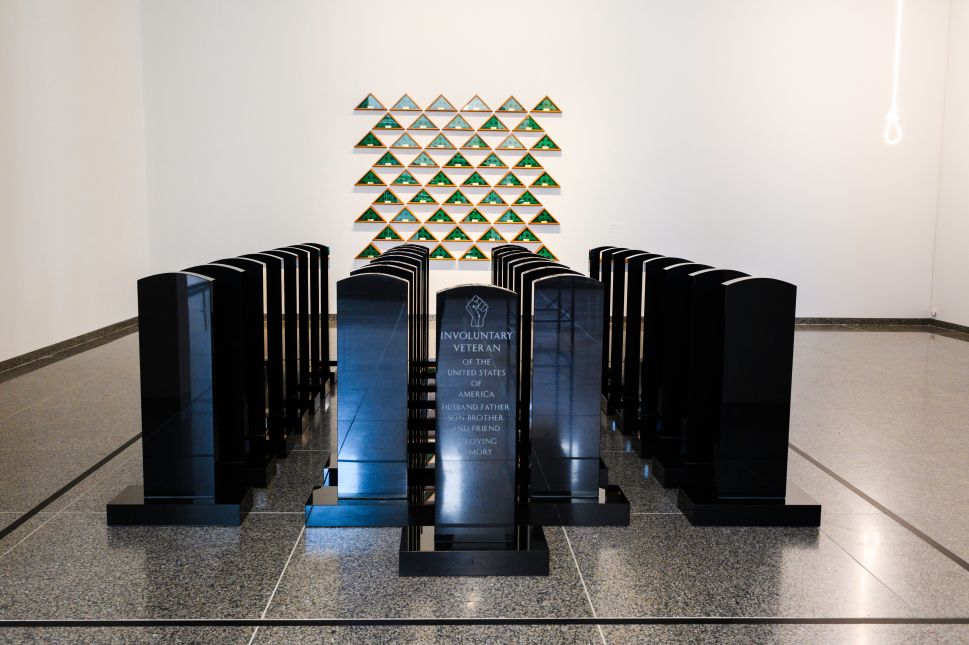

Your following of enthusiasts and collectors seems to have grown organically over time, but maybe not as quickly as you would have liked. Do you spend a lot of time cultivating collector relationships?
Cultivating relationships with enthusiasts and collectors is an essential part of my practice, and I prioritize building genuine connections with those who resonate with my work. Engaging with the community, whether through social media, exhibitions or personal interactions, allows me to share the stories behind my art and foster a deeper appreciation for it. These relationships are vital for sustaining and expanding my artistic practice.
Is there an artist you’re particularly excited about right now who you think we should check out?
I’m currently excited about a few artists. Kevin Williams, Harmonia Rosales, Noel Anderson and Yoyo Lander. These artists vary in age and gender but all share a common theme of authentic storytelling through the Black American lens. And all of these artists possess a special ability to not only tell but also provide history lessons through their work. All the while taking risks political positions and materials. I highly admire an authentic risk-taker.
